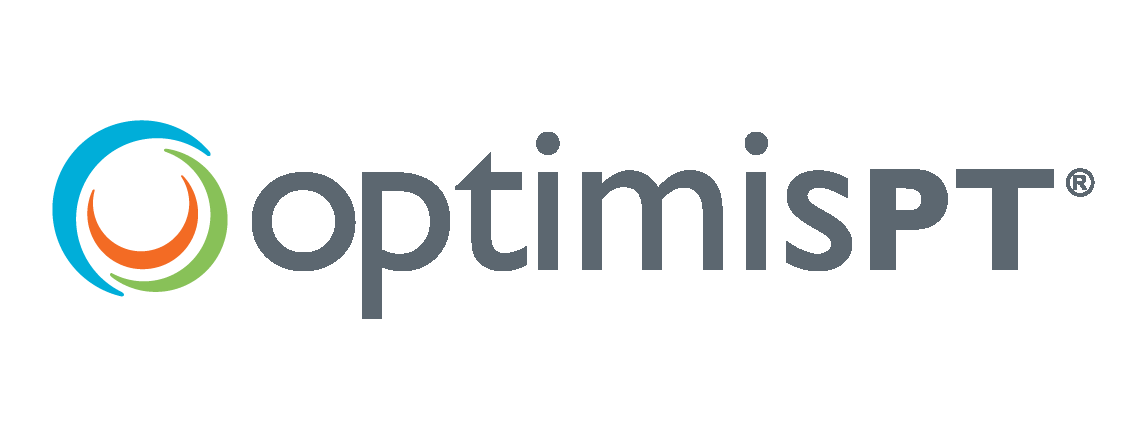4 Key Elements Why Using an EMR is Better than Using Paper Charts
By: Jennifer Heiligman, PT, MPT
While the use of an Electronic Medical Records system, or EMR, is becoming more and more commonplace in healthcare facilities, there are still a number of clinics that continue to complete their clinical documentation using paper. HealthIT.gov cited a study in 2017 indicating that 85.9% of office based medical professionals use an EMR. This number has significantly increased since 2008. However, this means that there are still about 14% of practices that are holding out on making the transition to electronic records. In gathering data from the providers that are interested in OptimisPT to use as an EMR, we see a large number of start up practices that are planning to or have already begun documenting on paper as opposed to an EMR.
Some reasons for delaying the transition may include sticking with what they know. There are practitioners who have only ever documented on paper. They may feel that it has worked this far, so why change now. Another valid reason for continuing with paper is the cost factor. This is a key reason cited by the start up practices we talk to. Even if you are using the least expensive EMR you can find, chances are you will still have initial costs to put out. Finding the funds can be challenging for a start up practice.
However, there are some key elements that should be considered in your decision that will probably outweigh staying in your comfort zone and make the increased initial cost worth it.
Cost Savings
While most practices may experience an initial increase in cost when switching to an EMR from paper, you will actually save money in the long run when it comes to medical records. Initially you may have some expenses for purchasing devices such as laptops or tablets. There may also be a cost of decreased efficiency while your staff learn the new system. However, by eliminating paper, you decrease the time staff has to spend filing paperwork, which may allow you to decrease the amount of staff you need, and you can decrease the physical storage space needed for paper records. This includes filing cabinets and the space to house those filing cabinets.
Improved Documentation
Healthcare providers are not known for their handwriting. Legible handwriting is often sacrificed when trying to document at the point of care, document quickly and try not to leave out any details. This can unfortunately lead to errors in patient records and treatment. When using an EMR, the documentation is always legible and organized which can also improve patient safety.
In addition, paper records may not allow sufficient space for the provider to include all the necessary information they feel is important regarding that patient. This is not a limitation when using an electronic record. Electronic charts are also better organized. It is much easier to find specific information quickly within an electronic chart. This cannot always be said regarding a paper chart where information could have been easily misfiled.
If you purchase an EMR like OptimisPT, the system will offer prompts and reminders to the providers to be sure to include necessary information into their documentation. These alerts will help the provider maintain compliance with regulations helping to improve their documentation. This in turn, may help improve reimbursement since required elements are not missed or forgotten.
Security
While there are potential security issues with both paper charts and electronic charts, with proper encryption and cybersecurity processes put into place, electronic records are much more secure. Access to health information can be granted to only those who are authorized. On the other hand, paper charts can easily be accessed by unauthorized individuals. This may occur from human error of simply forgetting and leaving a chart in a public area of the clinic. A break-in may compromise personal health information or if a natural disaster occurs, the only copy of a patient’s chart may be destroyed. Paper charts can also be easily misplaced, again leaving them vulnerable to unauthorized access.
In addition, paper charts can be tampered with much easier than an electronic chart. There is really no fool proof method to keep track of who last looked at a paper chart or made changes or updates. On the other hand, an electronic chart will generate an automatic audit trail that can be reviewed in order to see who viewed or updated a patient’s record and when. If records are kept electronically in a secure cloud based network, the possibility of compromise or destruction is decreased significantly.
Improved Efficiency
When the idea of improved efficiency is mentioned, the initial thought is probably related to the impact implementing an EMR will have on the therapists. The therapists should be able to complete their documentation more efficiently and effectively using an EMR instead of paper. An EMR, like OptimisPT, has embedded templates, actions, and outcome measures readily available for the therapist to add in just one click, as well as other customizable features used to increase documentation efficiency. In addition, OptimisPT contains clinical decision support adding to efficiency and improved treatment, a feature which could never be available when using paper charting.
While the impact on the therapists is an important fact, the improved efficiency gained by the front office staff should not be overlooked either. For instance, if a patient calls the office for an appointment or needs other information, with paper charting, the front office staff would need to put that patient on hold and go find the chart. When they do locate the chart, if it has not been kept organized, it may take extra time to find the needed information such as the number of visits the patient has had or their remaining authorization. When using an EMR this information can be readily available to the front office staff without even having to leave their seat. They simply pull up the patient in the EMR system on their computer. They would then also use the same system to schedule any appointments.
Another administrative efficiency that can be gained when using an EMR is the ability to electronically send notes or plan of care certifications to physicians and insurance companies. Most EMRs, including OptimisPT, offer an electronic method of sending documents. This eliminates the need to locate the paper chart, locate the correct document and then manually fax that information. When faxing manually, you also need to manually track and record what was sent, when it was sent and was it successful. An EMR will do all of that automatically.
Most practices are coming to realize that there are definitely more problems and concerns in the continued use of paper charts than benefits. The decreased security and efficiency of documenting on paper makes it difficult to justify continuing with this method. In addition, some government programs may actually decrease reimbursement for those practices that have not adopted an EMR. When documenting on paper, it also makes it much more time consuming and difficult to submit claims in order to get paid and getting paid is critical to continuing to run a successful business. For the reasons listed above and many more, if your practice has not yet made the leap to an EMR, now may be the time to take the plunge.
If you are interested in how OptimisPT can make your transition from paper to electronic records painless, please Schedule a Demo to learn more. If you are a start up practice be sure to ask about our Special Start Up Pricing.




